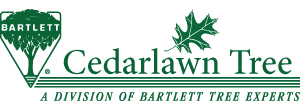Shrubs for Fall and Winter Interest
Shrubs for Fall and Winter Interest
Extending the visual interest of a landscape plan into fall and winter typically involves the addition of evergreen trees and shrubs. While evergreen foliage is certainly useful in this regard it should not be considered the only option. The addition of shrubs with interesting fall color, fruit set or bark characteristics can also serve to transition visual appeal through the seasons. Hollies are commonly used here in New England in this regard.
While evergreen hollies can be found in many landscapes, an underused Ilex species is winterberry holly (Ilex verticillata). This is a deciduous holly that boasts a magnificent fruit set of red to orange-red berries, depending on cultivar, that persist long into winter. Many cultivars are available and range from from12-18’ in mature height.
Other shrubs that provide an interesting fruit display include 1) beautyberry (Callicarpa bodinieri) with small, purple berries into late fall 2) cotoneasters (Cotoeaster sp.) with red berries into winter 3) cranberrybush viburnum (Viburnum opulus) that provide red fruit into mid-autumn and 4) linden viburnum (Viburnum dilatatum) with small, bright red fruit that last until early winter.
Shrubs that provide good fall foliage color for several weeks include: 1) redvein enkianthus (Enkianthus campanulatus) with a orange-red fall color 2) fothergilla (Fothergilla sp.) with typically an orange-red fall color 3) Virginia sweetspire (Itea virginica) with a nice maroon fall color 4) spicebush (Lindera benzoin ) with a showy yellow fall color 5) sumacs (Rhus sp.) with a red or maroon fall color 6) highbush blueberry (Vaccinium corymbosum ) with a red, red-orange or maroon fall color and 7) some viburnums, particularly witherod viburnum (Viburnum cassinoides) with a showy red fall color.
While shrubs with interesting bark characteristics are not abundant, some members of the genus Cornusare often used primarily for their winter twig appeal. Examples include tatarian (Cornus alba) and redosier dogwoods (Cornus sericea) that exhibit a red twig color on younger growth.
Finally, while you would not expect flowering qualities to be a factor in fall and winter shrub selection, there are several shrubs that fill this void. Our native witchhazel (Hamamelis virginiana) that flowers in fall along with introduced (Hamamelis mollis) and hybrid witchhazels (Hamamelis x intermedia) that flower in late winter provide a flowering display that often surprise passers by.








